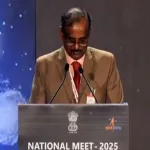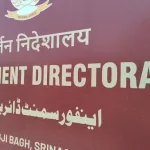Mismatch between nutrient with drawls through intensive cropping and their replenishment through fertilizers and manures have resulted in sharp decline in the native nutrient resources of the soil. As a consequence, multi-nutrient deficiencies emerged in most of the soils. At present deficiencies of 6 nutrients namely N, P, K, S, Zn and B are noticed widely, with sporadic deficiencies of nutrients like Fe and Mn. In addition declining soil organic matter content and sub-surface compaction are also reported in some of the soils representing high productivity zones.
Whereas nutrient use is unbalanced and inadequate in majority of the farming situations, indiscriminate use of N fertilizers is reported in other areas resulting in serious environmental implications by way of nitrate leaching and nitrogen oxide emissions. This scenario calls for effective monitoring of soil health and its management through rationalizing fertilizer applications. Increase in nutrient use efficiency, not increasing fertilizer application rates per se should be the ultimate objective of such management.
Government initiatives
In view of the fragile soil health and farmers unawareness about ever-widening soil fertility constraints government initiated several schemes in the previous five year plans with major emphasis on Strengthening Soil Testing Laboratories (STLs) and promoting balanced and integrated use of fertilizers. In district Bandipora, one STL at district level and two village soil testing laboratories are in areas of Sumbal and Shadipora.
Soil testing is time tested scientific technique to monitor soil health. Periodic soil testing with good recordkeeping for each field (including prior soil test data, fertilizer and manure application, crops grown, moisture conditions and crop yields) may help understanding changes in soil fertility. Soil testing is the basis for scientifically sound nutrient management decisions. Fertilizer application based on soil testing leads to increased yields and profits by enhancing nutrient use efficiency and minimising nutrient losses. Soil testing also provides the basis for improving the uniformity of nutrient application across the field.
As the in-field variation in nutrient availability decreases, crop growth is more uniform and optimum response to other management inputs is achieved. A regular soil testing programme further contributes to environmental sustainability because fertilizer applications based on soil tests and realistic yield goals help to ensure that adequate, but not excessive supplies of plant nutrients are available in the soil system. Thus, soil testing is the foundation for balanced fertilization, is necessary to prevent N losses due to leaching. Correctly fertilized crops produce higher yields and take up more soil N, and improved N use efficiency lessens the potential for leaching and surface run-off losses.
Beginning of SHCs
The soil testing programme was started in India in the year 1955-56 with the setting up of 16 Soil Testing Laboratories (STLs) under ‘Determination of Soil Fertility and Fertilizer Use’ programme. Total nutrient content varies from soil to soil, and plant available forms of nutrients are chemically determined in soil testing laboratories. Till 1980, the laboratories generally used to analyses for pH, texture, electrical conductivity, organic carbon (as an index of available N), and available P and K. There was no analysis for micronutrients.
It is true that till 2013-14 as many as 71.3 million soil health cards were given to farmers across the country. However, these were largely the initiatives of state governments, implemented over varying periods of time. The DAC has been collecting this data since 10th Five Year Plan. These initiatives were sporadic and random and therefore did not cover all the farmers within a particular time-cycle. The approach also was not comprehensive in terms of procedure for collection of soil samples and uniformity of soil testing methods. Many of these cards contained recommendations of NPK only, ignoring secondary and micro-nutrient deficiencies. Needless to state that an incomplete recommendations further widened nutrient imbalance and encourages nutrient mining from the soil.
Government of India’s earlier support was under ‘National Projection Management of Soil Health and Fertility’ in the XIth Plan. It was limited to assisting the state governments for Static Soil Testing Laboratories (SSTLs) and Mobile Soil Testing Laboratories (MSTLs). There was no provision to provide any assistance to the state governments to undertake collection of soil samples and their analysis. Thus the soil health cards provided by the state Governments differed widely in their content, area coverage and periodicity.
Soil health management under National Mission for Sustainable Agriculture (NMSA)
Soil health management (SHM) is one of the sub-missions of NMSA. It aims at strengthening of soil testing infrastructure in the States human resource development. It is operated as a centrally sponsored scheme and the pattern of assistance was 75:25till the year 2014-15. It is now 60:40 between Centre and State with effect from the year 2015-16.
Soil health card scheme
This centrally sponsored scheme was launched by Prime Minister on 19th February, 2015 at Suratgarh, Rajasthan. Integrated Nutrient Management (INM) Division of the DAC&FW in the Ministry of Agriculture and Farmers’ Welfare implements the scheme. It has been approved for implementation during the XII Plan with an outlay of Rs. 568.54 crore. It aims at issuing SHC to each one of the 140 million farmers of the country once in a cycle of 3 years on a continuous basis. The first cycle is of two years and it would be completed by March, 2017. This will facilitate building-up soil database of the country and monitor the changes occurring in the soil health over time.
The scheme is further built on the principle of soil sample collection at decentralized level and analysis for 12parameters. Based on such comprehensive soil diagnostics, the SHC will recommend manure, fertilizers and amendments for at least six crops, (3 kharif crops and 3 rabi crops). It lays down a grid of 10 ha in rainfed and 2.5 ha in irrigated areas for collection of soil samples. Based on the soil test results of the grid- generated composite samples, all the farm holdings will get SHCs A total of about 253 lakh soil samples are to be tested. The first cycle for preparation and distribution of SHCs has been squeezed to 2 years to facilitate soil-test based health nutrient management. Accordingly, the target has been split into 24500 and 33000 numbers of samples in district Bandipora, respectively for the years 2015-16 and 2016-17 to generate 57500 SHCs during these two years. The subsequent cycles will, however, run over a period of 3 years each.
Scheme objectives
- To issue SHCs at a 3 year interval to all farmers of the country, so as to provide a basis to address nutrient deficiencies in fertilization practices.
- To diagnose soil fertility-related constraints with standardized procedures for sampling uniformly across states and analysis; and design Tehsil/Block level fertilizer recommendations.
- To develop and promote soil test based nutrient management for enhancing nutrient use efficiency.
- To build capacities of district and state level staff and of progressive farmers for promotion of balanced nutrient management practices.
- To strengthen functioning of STLs through capacity building, involvement of students of agricultural and science colleges and effective linkage with Indian Council of Agricultural Research (ICAR)/State Agricultural Universities (SAUs).
Soil sampling protocols
The accuracy and utility of soil test results and fertilizer recommendations depend largely on the precision in soil sampling. In fact, a poor soil sample is the biggest source of error in the soil testing programme. In order to collect representative soil samples, uniform sampling norms have been prescribed in the present SHC Scheme. The scheme envisages GPS-enabled soil sampling at a grid of 2.5 ha in irrigated areas and 10 ha in rain-fed areas. The samples are drawn from a depth of 0-15 cm, following due collection protocols. The ideal time for collection of soil samples is between harvest of one crop and sowing/planting of the next crop. Thus there are mainly two windows for soil sampling i.e. April to June (pre-kharif) and October to November (pre-rabi).
Soil analysis
Soil samples collected as per prescribed protocols are analyzed for following 12 important parameters:
Primary: Nitrogen (N), nutrients; Phosphors (P) and Potassium (K).
Secondary: Sulphur (S) nutrient.
Micro: Zinc (Zn), Boron (B), Iron (Fe), Manganese (Mn) and Copper (Cu).
Others: pH, EC and Organic Carbon.
(Author works at Department of Agriculture, District Bandipora. He can be reached at [email protected])





